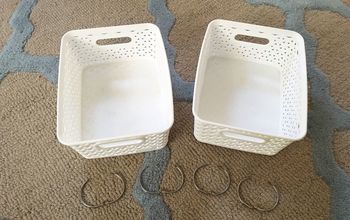How do I replace a subfloor?
Related Discussions
Vinyl plank flooring vs pergo (laminate)
I currently have stinky dirty carpeting in my living room and I want to replace it with a durable flooring that can stand up to dogs and kids.
How to remove popcorn ceiling that has been painted?
Does having a paint over a popcorn ceiling change how I'd remove the popcorn ceiling?
How to apply peel and stick wallpaper?
I want to spruce up my walls with peel-and-stick wallpaper. Has anyone used this before and can advise me as to how to apply it properly?
How to stain wood floor?
I've heard staining is a good technique for updating floors. So how do I stain my wood floor?
How do I remove carpet in front of door and replace with tile?
I need to cut the carpet in front of my door and put tile in there.

It’s a straightforward job. You pretty much have two choices as far as material...OSB (oriented strand board j or plywood. I would highly recommend using plywood because if OSB gets wet it will swell and then you’ll have a pronounced lump under flooring. Plywood will not do this. The cost difference is not to much either. First remove everything from the room including cabinets and the toilet if it is in a kitchen or bath. Remove the flooring that is over the subfloor. Pull up the subfloor. If you have a crawl space underneath you might want to put in fiberglass batt insulation. Lay down the new subfloor making sure not to have any of the seams lined up on the short side. Before each sheet put down a bead of construction adhesive on top of the joists. This will help ensure the floor never squeaks. Screw down each sheet instead of nailing it for the same reason as using the adhesive.
Lynetta,
Most local building codes today require a glued and nailed 3/4" material rated for use as subflooring if your floor joists are 16" on center. Tongue and groove plywood is your best choice. It will give you the structural rigidity you need to lay any type of flooring over it. Stagger the joints. While your original subfloor is removed, it's a good time to examine the floor joists for cracks, splits, rot, etc. that you can fix now to make sure you will have a sound, flat surface to install the new subfloor over. The last thing you want is a spongy, bouncy subfloor that will affect your finished floor installation. As to how to do it, I have found setting my circular saw for the depth of the existing subfloor allows me to cut out the subfloor and remove the nails or screws in manageable sections
https://www.youtube.com/watch?v=HUmc_xa2c1I
Thanks!!